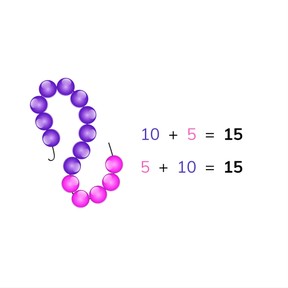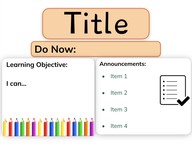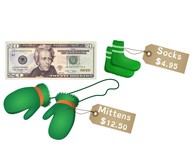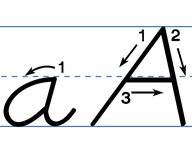8,000 schools use Gynzy
92,000 teachers use Gynzy
1,600,000 students use Gynzy
General
Students learn that in addition, it does not matter if the addends swap places, because the total remains the same.
Standards
-1.OA.C
Introduction
Start with decomposing by using beads. You count the red beads, the white beads, and determine the total. You do this with numbers and with an arrow to show the number bond. You can also do a few numbers in class, asking students to name a decomposition of the number. An example would be: "I decompose 15 into 4 and..." Next, make sure that all the students (or pairs/groups) have 20 blocks. Have them decompose 20 into a few divisions, such as 11 and 9. By doing so, they have created the addition problem 11 + 9, whose total is 20. Write this on the board. It is possible that students might also say 9+11, write this as well. Repeat this with 18 as the total.
Instruction
Using an image of beads, show that if you swap the addends in an addition problem, that the total remains the same. Show another image of beads. Ask how many beads there are and what colors they are. There are 4 yellow beads and 9 blue beads. Or 9 blue and 4 yellow beads. The addition problems are 4+9=13 and 9+4=13. The addends are swapped, but the total remains the same. Repeat this multiple times with different numbers. Point at the beads with your finger when you first count them and show the opposite problem. Ask students if they think one is easier than another. Some students think 15+3 is easier than 3+15. Next, show the decomposition of 18 on the interactive whiteboard as well as the possible addition problems. Practice this together with different decompositions. After practicing swapping addends with visual support, explain to students that this rule remains even when you cannot count the objects. Practice swapping addends in a problem without visual support.
Check that students understand adding to 20 with swapping addends by asking the following questions:
- Decompose 16 into 12 and?
- 13+4= 16, What is the total of 4+12?
- Which numbers in an addition problem can you swap?
- What happens to the total of an addition problem if the addends swap places?
Quiz
Students first do an addition problem with beads, then with an arrow showing the number bond, and finally, move to calculate without visual support. They must fill in the missing numbers or the totals of the addition problems.
Closing
To close, do two addition problems with students on the interactive whiteboard using the image provided. The second asks to do the addition problem without visual support.
Teaching tips
Students who have difficulty can be supported by the use of MAB-blocks or the rekenrek. Have them decompose 18 into 3 and 15 blocks (or beads). Have them count all the beads or blocks and then swap the addends and do 15 and 3. They can also practice decomposing numbers to 20.
Instruction materials
Optional: blocks or rekenrek
The online teaching platform for interactive whiteboards and displays in schools
Save time building lessons
Manage the classroom more efficiently
Increase student engagement
Discover more!
About Gynzy
Gynzy is an online teaching platform for interactive whiteboards and displays in schools.
With a focus on elementary education, Gynzy’s Whiteboard, digital tools, and activities make it easy for teachers to save time building lessons, increase student engagement, and make classroom management more efficient.







